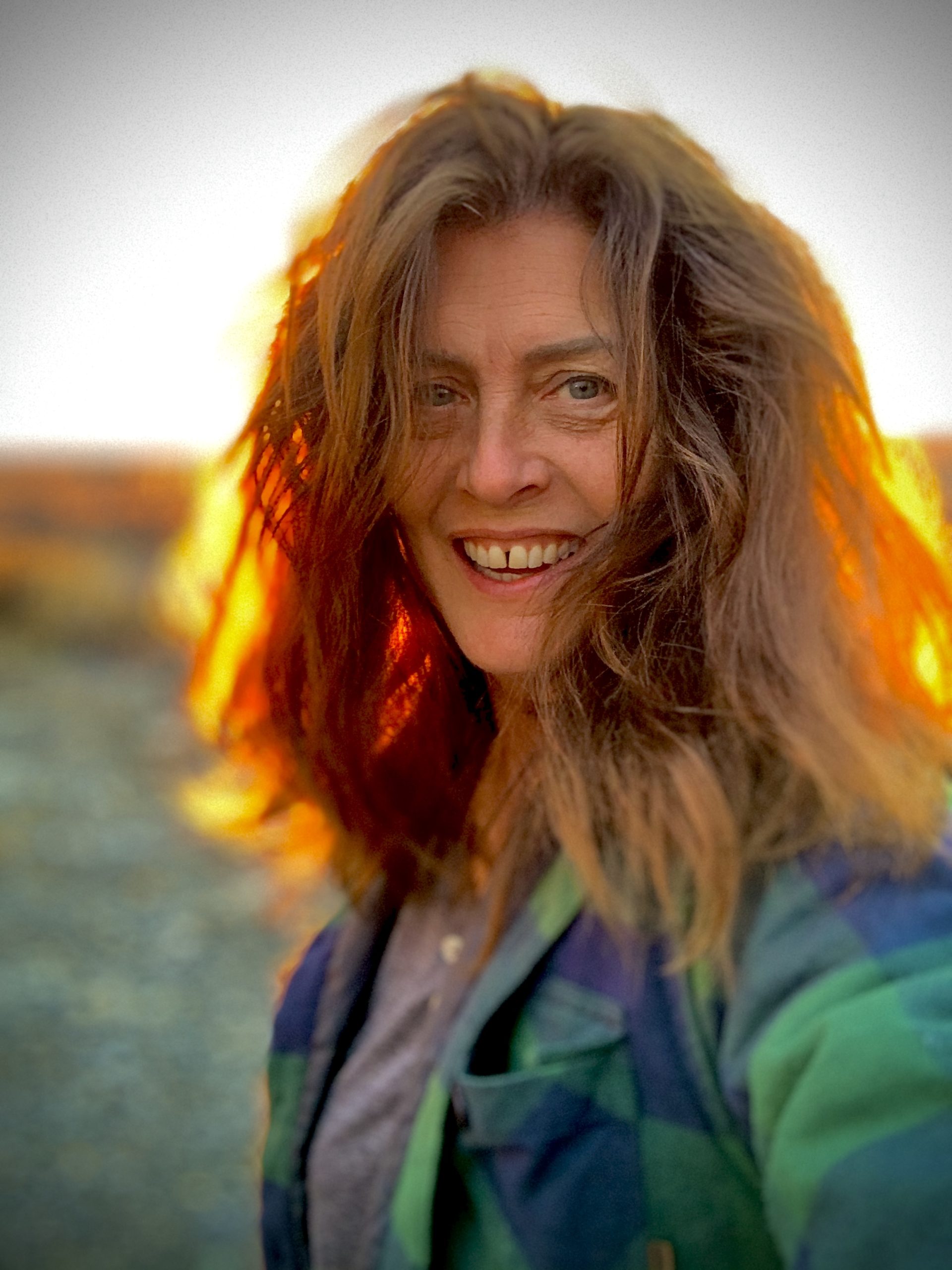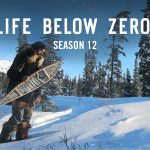Sue Aikens rose to fame when her life was among those featured in the documentary-style series “Life Below Zero” from when it premiered on the National Geographic Channel on 19 May 2013. She made quite an impression on millions of viewers with her unconventional work in Kavik River Camp in Alaska, 200 miles or 130kms north of the Arctic Circle. The seven-time Primetime Creative Arts Emmy Award-winning program aired season 17 in 2021, continuing to chronicle her daily adventures living alone in an inhospitable region. So much has happened through the years, so many wondered what happened to her.
Early life and family
Susan Aikens was born on 1 July 1963, in Mount Prospect, Chicago, Illinois. Her family moved from place to place until she turned 12, when her mother left her father and took her to live in a village some 80 km north of Fairbanks, Alaska.
She never blamed her mother for doing this, as she said, ‘Something unique must have happened between my mother and my father for that situation to have evolved.’ Adjusting to this new life was made more difficult when her mother abandoned her not long after they arrived, and she had to learn how to survive on her own. She apparently matriculated from high school before she turned 13. An old longtime Alaska resident said to her, ‘You better learn how to hunt, girl, or you’re gonna die,’ as he handed her a rifle and bullets. It was up to her to figure out what she was going to do with her life, but she knew that she needed to earn money first.
Sue used to have around 32 giant Alaskan malamutes, and ran a 400-mile trap line to make a living, but later stopped trapping because she ultimately decided that ‘foxes are friends, not fur coats.’
The timeline is a bit sketchy but she was married twice. Her first husband died of brain cancer, then she and her second husband were together for 17 years and had two children together before calling it quits.
She shared that he couldn’t handle living in Alaska, so they moved to Oregon. One night, while they were talking, he said to her, ‘You know, I’m more John Wayne. You’re more Grizzly Adams. I love you to death, but we’re gonna choke each other.’ They remained friends before he passed away.
Living at Kavik River Camp
Being at one with nature and craving extreme isolation, she grabbed the opportunity to live at a camp in Kavik, 500 miles from the closest city, which was Fairbanks, and 80 miles from the nearest road. Her address is a GPS coordinate: 146.54west by 69.4north. Sue revealed, ‘My happiest place is alone…in my own head alone, that’s just where I’m at my best.’ She tried living in the city but it was slowly killing her as she didn’t understand or like the games that most people play in society.
The then-owner of the site in Kavik and Sue got in touch through mukluk messaging, and an agreement was reached about her leasing the place, as he said, ‘You can live up there and do what you want.’
She was in her 30’s at that time, and when she arrived at the camp she cried, and had second thoughts about staying there due to the state of the place. The previous occupants did a poor job of taking care of it, as the garbage was all piled up, and as a result, bears were all over the place. It shouldn’t have been the case, as it’s a protected ecosystem in which garbage wasn’t buried but burned to ashes. Sue took it as a challenge to fix the camp, and put things in order.
She turned the old oil camp into what she called a twisted bed & breakfast, where tourists, hunters, photographers, and scientific researchers could stay from June to September, and she would provide logistical support. It’s a functioning outpost that served as a weather station, refilling station, and search and rescue station. It has a small airstrip where people and supplies from Fairbanks could be flown in. The camp has a fuel shed, generator shed, a storage facility for fuel, three rows of trailers, outhouses, and a big tent where she stays that she calls her dining hall.
There is an internet connection so she’s not cut off from the rest of the world, and could communicate with her family and run her business.
Bear attack in 2007
Even if she burned all her garbage, there’s a lingering odor that a bear could smell 10 miles or 15kms away. She believed it was what attracted the juvenile male grizzly to her place. When the river was starting to freeze, she went there to collect water for her supply, and the bear attacked her, tossing her around with jaws sinking into her skull. Somehow the bear left, and went to the riverbank, and with a torn shoulder and hip out of the socket, she dragged herself to her home to call for help, meantime attending to her wounds the best way she could. After that, as farfetched as it might seem, she cinched her hips together with her gun belt, took her gun, went out and shot the bear. On her way back her hips gave out, and she again dragged herself back to her place, and waited 10 days for help to come.
TV appearances
Sue appeared in an episode entitled “She’s A Great Shot” in TLC’s reality television show “Sarah Palin’s Alaska,” which aired in December 2010. The former governor of Alaska along with her 72-year-old father, Chuck Heath, and family friend, Steve Becker, went on a caribou hunting trip, with the Kavik River Camp serving as their base camp, and so they met Sue.
With her camp said to be a popular drop-off for hunting parties, she was seen again in a few episodes of season one of the documentary TV series “Flying Wild Alaska,” which aired in 2011 on the Discovery Channel. The show was about the Tweto family who run the Era Alaska airline, and Jim Tweto, the chief operating officer, was on the lookout for potential landing strips. One of their pilots, John Ponts, went to Kavik and landed on her airstrip.

About “Life Below Zero”
How did it start?
Producers were always looking for new stories about Alaska, as viewers have shown no sign of losing interest in it and the people who choose to live there. The production company BBC Studios heard of her, and was interested in her unique lifestyle. They approached her about doing the show – ‘I like my privacy, but I don’t mind sharing it as long as it’s tastefully done,’ she said. Sue shared that the producers were respectful of her and didn’t try to change her. They showed what she was really like, living her life the way she liked it. They would call her up to know what she’s doing and what her plans were, and then ask her if they could film that. She said she really enjoyed the filming process.
The first season of “Life Below Zero”
Sue led an interesting, different life to most urban dwellers, and the viewers couldn’t get enough of her. She had been living at Kavik for about a decade when she began filming; throughout the first season, one could see how difficult and dangerous it was to live alone in the middle of nowhere, having predators as neighbors, and most of the year battling the extreme cold.
It was not an exaggeration when she said that ‘it’s always a challenge staying alive day to day.’ Her back-up plan even had a back-up plan, as she’s always thinking of the worst-case scenario. Everything she did at the camp was something she learned over the years.
The first episode showed Sue in a small lodging in Fairbanks, packing up her things as she was preparing for her trip back to Kavik River Camp. She underwent surgery due to a bad fall that broke her leg in June 2011, and she spent three months in recovery. She was anxious to see what became of her camp after being gone so long. Sue asked the pilot to fly lower so she had an idea of what’s waiting for her and could defend herself. When it seemed that everything was fine, she was dropped off. With a rifle in one hand, a shovel in the other, and only her headlamp to light her way, she walked towards her home at 40 degrees below zero.
After inspecting her place, she discovered that someone had stolen $5,000 to $6,000 worth of fuel that was supposed to last her the whole winter.
With only 10 days’ worth left and a storm brewing, she asked the pilot to deliver a couple of barrels as soon as possible. She also tied a rope from one building to the next so she could find her way, as there would be little to zero visibility once the storm arrived.
All her weapons were loaded and ready for firing; she never went anywhere without one, and it was within reach when she’s sleeping. She would often check the surrounding area for animal tracks and scan the horizon with a pair of binoculars from the roof of a trailer. If she spotted a bear, wolf, or wolverine encroaching on her territory, she would try to scare it away by firing a couple of rounds. Sue didn’t kill any predators unless it was necessary.
Whenever she left the camp, she would take everything she’d need if unable to get herself home. It was important that she could keep herself warm and protect herself. Having spare parts for the snowmobile and knowing how to fix it in case it broke down was also a necessity.
Jessie Holmes runs into snow drift while traveling along the highway with his dog sled team. A new episode of #LifeBelowZero airs Tuesday night at 8/7c on National Geographic. pic.twitter.com/Jsh7JwZWSq
— Life Below Zero (@LifeBelowZeroTV) November 8, 2021
She would go out and hunt for fresh meat, and that winter was looking to have ptarmigans for dinner. After she shot one, she dressed it right away using her bare hands, then cooked the heart and breast with butter, apple and cranberries.
The season ended with Sue calling her son to talk about her situation in which the owner of the camp wanted to sell, and she had to buy or she’d be booted out. She said, ‘I’m looking at being a 50-year-old fat chick trying to find a new career and a new life.’ Her son told her he loved her and wanted her to do whatever would make her happy. She went to Fairbanks, 120 miles or 200kms south of the Arctic Circle, to buy the camp, and she did.
With positive reactions from critics and viewers, the show has been renewed season after season.
What happened to Sue?
Personal life
Over a decade ago, Sue met a man named Michael Heinrich through the internet; he was married at that time so they just became friends.

After nine years of friendship and with his marriage ending in divorce, she let it be known that she was interested in taking their relationship a bit further. Since he was based in New York and she’s not thinking of retiring yet, they kept things casual and just planned their vacations perfectly. Based on their social media posts, they are still together. She comes across as a tough woman but she has her soft side too. In her July 2020 Instagram post, she tagged her boyfriend with the caption, ‘You have to stop and make time to give a moment to your sweetie. Long distances can be tough, but we both make it work. Love you sweetie.’
She has a good relationship with her children, and they have this yearly ritual of talking about three things that each one did or said that the other liked or didn’t like. Her grandchildren would sometimes come to visit her at Kavik.
Many fans were surprised to see Sue’s weight transformation, having lost 75 pounds in one year.
Back in October 2018, she decided to lead a healthier lifestyle; she wasn’t getting any younger, and her work at Kavik was very physical. She only had herself to depend on in doing chores around the camp, so she needed to be fit and healthy to do that well.
Lawsuit against BBC Productions
Despite her initial praise for the producers of the show, she filed a lawsuit in 2017 against the BBC Studios’ Los Angeles production unit, when she sustained serious injuries after being thrown off her snowmobile while driving across an overflow on the icy river at 60 miles per hour and hitting an ice heave. It happened in February 2015 while filming, and was aired in “The Crash” episode followed by the “Aftermath” episode in June that year. She claimed that she was forced to do that by the producer, Aaron Mellman, despite knowing the danger and stating her objection. The rescue was allegedly intentionally delayed, and she was also made to walk to show how much she was suffering for better footage, even as she requested assistance as she was in so much pain.
Uncertain times at Kavik River Camp
The government opened the Arctic National Wildlife Refuge to oil and gas drilling in 2017, and her camp was the sole commercial place that was near, being 12 miles or 20kms from its eastern border. There’s fear that they would take away her lease and re-auction it; it turns out that she essentially has no rights to the land, as she only owned the equipment, structures, and improvements she made.
Sue bid on an abandoned cabin in Chena, Alaska, and won it. She’s not giving up on her camp at Kavik and moving to this property permanently, but she wanted to plan for her future, and not be caught off guard in case the government kicked her off Kavik.
During the pandemic
Her business was affected due to the Covid-19 pandemic restrictions, as she had no clients at the camp, which meant there’s no revenue. However, instead of moping around that summer, she decided to do deep cleaning, and went about upgrading the facilities.
She replaced the old pipes of the gray water system with a lighter-weight detachable system, built two new outhouses, and put new tarps on the storage and generator sheds. She’s no carpenter, but still she managed to do all these by herself.
Sue needed to prepare for the long winter and ensure that she had enough provisions. Growing food in her garden was unsuccessful due to the weather, so she went out to forage and found fireweed, which was edible. It was also fortunate that she spotted a caribou and killed it, then proceeded to skin and cut the meat. It was one of four caribous that she’s allowed to hunt.
Sue has a fulfilling life running Kavik River Camp. She said that she’d always wanted to become a lighthouse keeper, as ‘they keep the lights on, they’re a safe haven, they mark safety for people.’ For her, Kavik is her lighthouse and she will stay there for as long as possible.







